Kirtland Temple, Kirtland, Ohio, USA
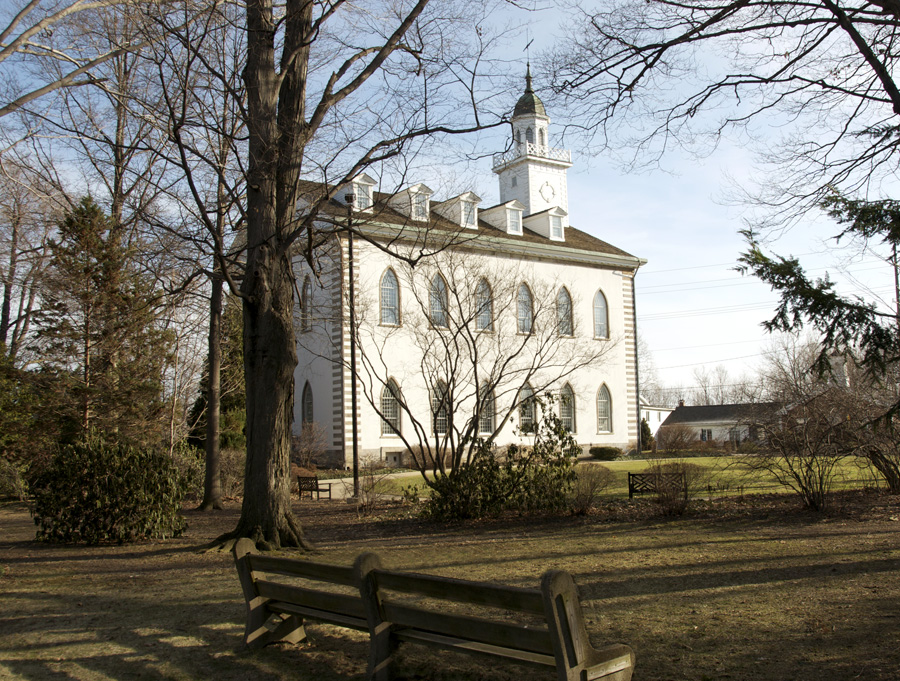
The Kirtland Temple was the first temple erected in this dispensation and the revelation to build it was given in the spring of 1833. It was constructed through great sacrifice by the Latter-day Saints. Eliza R. Snow described their arduous efforts as follows:
With very little capital except brain, bone and sinew, combined with unwavering trust in God, men, women, and even children, worked with their might; while the brethren labored in their departments, the sisters were actively engaged in boarding and clothing workmen not otherwise provided for-all living as abstemiously as possible so that every cent might be appropriated to the grand object, while their energies were stimulated by the prospect of participating in the blessing of a house built by the direction of the Most High and accepted by him. 1
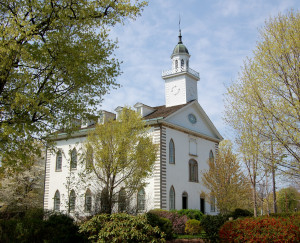
The First Presidency of the Church: Joseph Smith, Jr., Fredrick G. Williams, and Sidney Rigdon, saw the finished temple in vision to help direct for this sacred edifice. Fredrick G. Williams described the experience as follows:
Joseph received the word of the Lord for him to take his two counselors, [Frederick G.] Williams and [Sidney] Rigdon, and come before the Lord and He would show them the plan or model of the house to be built. We went upon our knees, called on the Lord, and the building appeared within viewing distance. I being the first to discover it. Then all of us viewed it together. After we had taken a good look at the exterior, the building seemed to come right over us, and the makeup of this hall seemed to coincide with what I there saw to a minutia. 2

The construction of the temple began on June 5, 1833, and was dedicated on March 27,1836. Many significant events occurred at the dedication including the singing of W. W. Phelps’ hymn, “The Spirit of God,” the performance of the Hosanna Shout, pentecostal manifestations, and angelic visitations.
| Key historical points for the Kirtland Temple: |
- The Kirtland Temple was the first temple constructed in this dispensation.
- The Lord Jesus Christ appeared to Joseph Smith, Jr. and Oliver Cowdery and accepted the temple.
- Moses, Elias, and Elijah appeared and committed the keys of their dispensations to the Prophet Joseph Smith.
- One week after the dedication, the Lord Jesus Christ appeared to Joseph Smith, Jr. and Oliver Cowdery “standing upon the breastwork of the pulpit,” and accepted the Kirtland Temple.3 After the appearance of the Savior, other heavenly beings appeared to Joseph & Oliver including Moses, Elias, and Elijah, each committing the keys of their respective dispensation unto them.4
Two years later, with the collapse of the Kirtland Safety Society, Joseph was forced to leave Kirtland, and eventually control of the temple was lost. The Reorganized Church of Jesus Christ of Latter-day Saints, now known as Community of Christ  , obtained ownership of the Temple in 1880 and restored it. For many years, Community of Christ maintained and provided tours of this magnificent building. On March 5, 2024 it was announced that the temple was purchased from Community of Christ by The Church of Jesus Christ of Latter-day Saints. This historic announcement was made in a joint statement by both faiths. Included in the landmark agreement were other historic buildings, sites, documents and artifacts.
, obtained ownership of the Temple in 1880 and restored it. For many years, Community of Christ maintained and provided tours of this magnificent building. On March 5, 2024 it was announced that the temple was purchased from Community of Christ by The Church of Jesus Christ of Latter-day Saints. This historic announcement was made in a joint statement by both faiths. Included in the landmark agreement were other historic buildings, sites, documents and artifacts.
SOURCES
1 Edward W. Tullidge, The Women of Mormondom (New York: Tullidge & Crandall, 1877), 82.
2 Truman Angell, Autobiography, Our Pioneer Heritage, Writings of Early Latter-day Saints, 198.
3 Doctrine & Covenants 110:2-6.
4 See Doctrine & Covenants 110:111-116.
Map & Directions
For hours of operation go to:
https://www.kirtlandtemple.org
Ownership Status
The Kirtland Temple is owned and maintained by The Church of Jesus Christ of Latter-day Saints. Public tours of the temple under the stewardship of the Church began on March 25, 2024. There is no charge to take the tour.
Photos
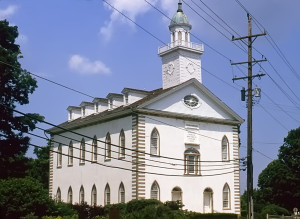
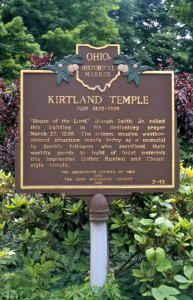

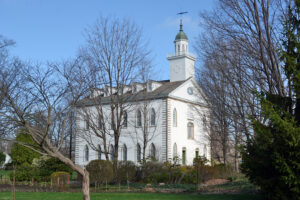
Articles & Resources
Various Accounts of the Events of the Dedication of the Kirtland Temple
Author(s): Joseph Smith, Jr., Oliver Cowdery, Heber C. Kimball, George A. Smith, Eliza R. Snow, Benjamin Brown, & Truman Angell.
Type: First-person accounts
Source(s): Joseph Smith, History of The Church of Jesus Christ of Latter-day Saints, 7 vols., introduction and notes by B. H. Roberts (Salt Lake City: The Church of Jesus Christ of Latter-day Saints, 1932-1951), 2: 428; Leonard J. Arrington, “Oliver Cowdery’s Kirtland Ohio ‘Sketch Book,'” Brigham Young University Studies 12 (Summer 1972): 426; Journal of Discourses, 26 vols. (London: Latter-day Saints’ Book Depot, 1854-1886), 9: 376; Journal of Discourses, 26 vols. (London: Latter-day Saints’ Book Depot, 1854-1886), 11: 10; Edward W. Tullidge, The Women of Mormondom (New York: Tullidge & Crandall, 1877), 95; Benjamin Brown, “Testimony for the Truth,” Gems for the Young Folks (Salt Lake City: Juvenile Instructor Office, 1881), 65; Truman Angell, Autobiography, Our Pioneer Heritage, Writings of Early Latter-day Saints, 198.
Brother George A. Smith arose and began to prophesy, when a noise was heard like the sound of a rushing mighty wind, which filled the Temple, and all the congregation simultaneously arose, being moved upon by an invisible power; many began to speak in …
Eliza R. Snow's Description of the Kirtland Temple
Author(s): Eliza R. Snow
Type: First-person account
Source(s): Edward W. Tullidge, The Women of Mormondom (New York: Tullidge & Crandall, 1877), 80-95.
The erection of the Kirtland temple was a leading characteristic of the work of the last dispensation. It was commenced in June, 1833, under the immediate direction of the…
Heber C. Kimball's Account of Building the Kirtland Temple
Author(s): Heber C. Kimball
Type: First-person account
Source(s): Orson F. Whitney, Life of Heber C. Kimball (Salt Lake City: Kimball Family, 1888), 67 – 68.
Our women were engaged in knitting and spinning, in order to clothe those who were laboring at the building; and the Lord only knows the scenes of…
Kirtland Temple, at JosephSmith.net
Kirtland Temple, at Doctrine & Covenants Revelvation Sites Website
Karl Ricks Anderson, Joseph Smith’s Kirtland: Eyewitness Accounts, 1989.
Milton V. Backman, Jr., “Establish a House of Prayer, a House of God: The Kirtland Temple,” The Prophet Joseph, ed. Larry C. Porter and Susan Easton Black, 1988.
A. F. Bennett, “The Kirtland Temple,” Utah Geneological and Historical Magazine, 1936.
Janet Brigham, “Kirtland Today: History with a Future,”  Ensign, Feb. 1979, 50.
Ensign, Feb. 1979, 50.
Lyndon W. Cook, “The Apostle Peter and the Kirtland Temple,”  BYU Studies, 1975.
BYU Studies, 1975.
Richard O. Cowan, “The House of the Lord in Kirtland: A ‘Preliminary Temple'”, Regional Studies in Latter-day Saint Church History: Ohio, ed. Milton V. Backman, Jr., 1990.
B. Fillmore, “Story of the Church: Kirtland, A Temple Erected,” Improvement Era, 1964.
M. P. S. Hitchcock, “Joseph Smith and the Kirtland Temple,” Lake County Historical Society Quarterly, 1965.
Keith W. Perkins, “Kirtland Temple,” Encyclopedia of Mormonism, ed. Daniel H. Ludlow et al., 1992.
Lauritz G. Peterson, “The Kirtland Temple,”  BYU Studies, 1972.
BYU Studies, 1972.
Stephen D. Ricks, “The Appearance of Elijah and Moses in the Kirtland Temple at the Jewish Passover,”  BYU Studies, 1983.
BYU Studies, 1983.
Albert L. Zobell, Jr., “The Lord’s House at Kirtland,” Improvement Era, 1961.
